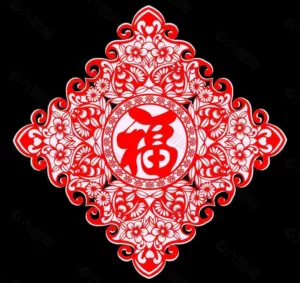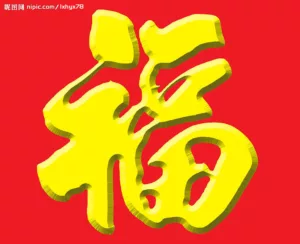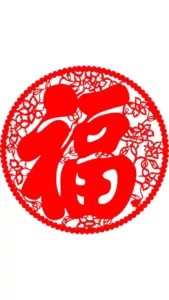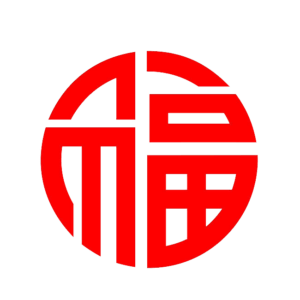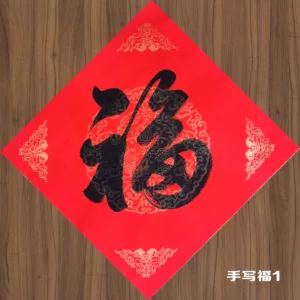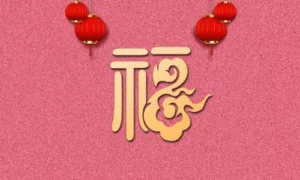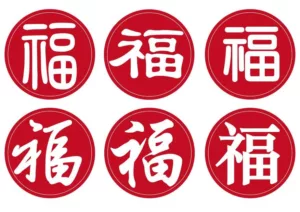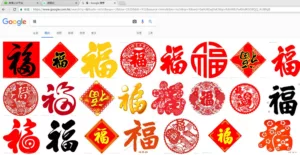By Jodi Yim James, Staff Writer
(originally publish in the Feb 2012 issue of China Insight)
The Chinese character 福fú means Good Fortune or Blessings. 福fú is one of the most popular Chinese characters and it is used to decorate everywhere during the celebration of the Chinese New Year. 福fú is also commonly posted artistically on a permanent plaque or framed painting inside homes with the intended message of “Blessings” or “Bless This House.”
During the Chinese New Year, this character is often painted in gold with a red background in the center of a red paper square that is poised on a point, like a diamond shape. This diamond-shaped square is then hung upside down on the front door of a building, or at the entrance of a home. There are several stories that explain this custom and its significance in Chinese culture.
Perhaps you have seen during the New Year and throughout the year a dilapidated place on a run-down street with a福fú sign always hung upside down. Perhaps you imagine that the 福 fú sign fell down and was put back up accidentally upside down in a careless manner. However, in the folklore of 福 fú, the character landing upside down by accident is not part of the story.
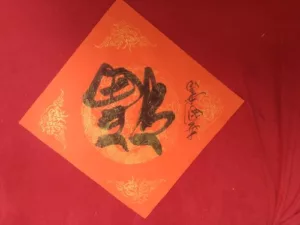
To understand the 福fú sign hung upside-down, one must reflect on both the spoken and written Chinese language. Chinese language and lore is full of plays on words or puns. Chinese is packed with multiple meanings and nuance because the spoken language has so few sounds. There are actually about 400 total pronounced syllables in the first place, which can then have about one in four tones each.
This provides the occasion for much play and linguistic frolicking. There are many occasions for re-interpretation, misinterpretation, or multiple interpretations. Semantics becomes a game of astute understanding of all of the diverse and various nuances of sounds and pronunciations or most of all, knowledge of the intended written characters. In this context, the idea that the Chinese would abandon written characters for a phonetic pronunciation writing system only, would actually be complete folly. The written characters, of which there are tens of thousands, clarify the intended meaning of what is being said.
On a serious note, perhaps this is why my late husband who was born in China, (Chinese being his first written and spoken language), lived by the mantra, “Never listen to what a person says. Always watch what they do. Therein lies the truth; the reality is in what you see, not what you hear.”
However, in the context of word frolic and fun, the upside-down sign is a play on words with 福fú. Along with the sign comes the pronouncement of the good wish 福到了, fú dào le, or “Fortune has arrived.” However, the sound fú dào le can also be written as福倒了, which literally means “fortune upside down”. Therefore 福到了or “fortune has arrived” happens to sound just like 福倒了 fú dào le, or “fortune upside down “. And that is why福fú is turned upside-down on doorways across the country.
Students of Chinese characters often give fresh interpretations to characters. They may see a breakdown of 福fú into several parts that signify having nice clothes, a nice house, a good job, good food, and money in the bank. In contrast, old folklore tells the story of a rich man holding a bottle of wine, which was then indicated in the character as a sign of wealth and happiness. Rice wine was served in celebration of a good rice harvest. Other interpretations indicate five life treasures: health, wealth, good fortune, long life, and tranquility.
However one would like to imagine good fortune, the character福fú is posted everywhere during Chinese New Year, signifying “Bless this House”. May you experience福fú in 2012, the Year of the Dragon, and now may you fully understand the upside-down posting of福fú.
